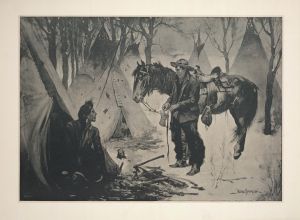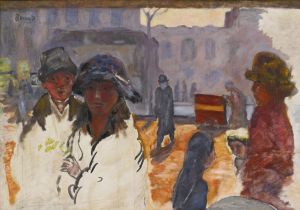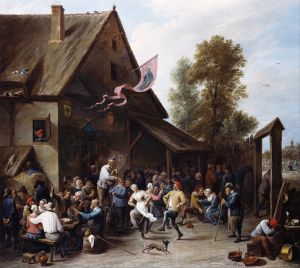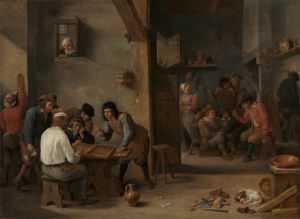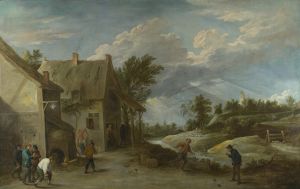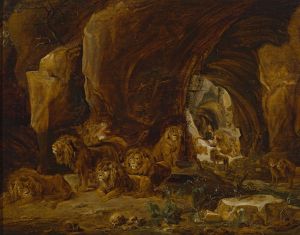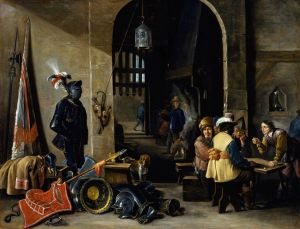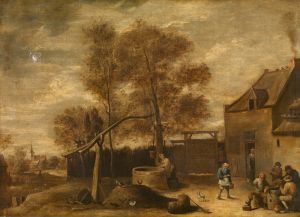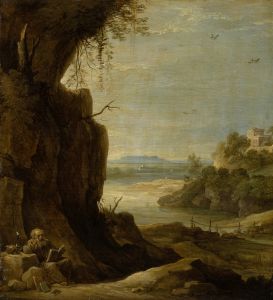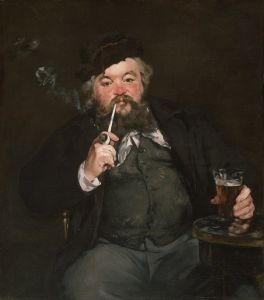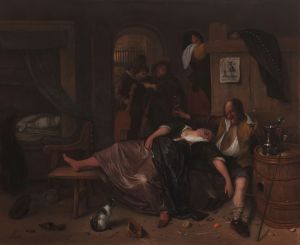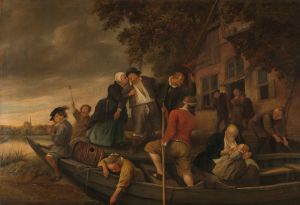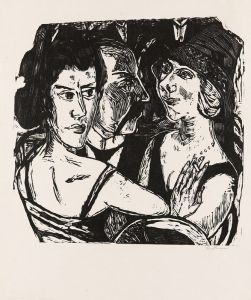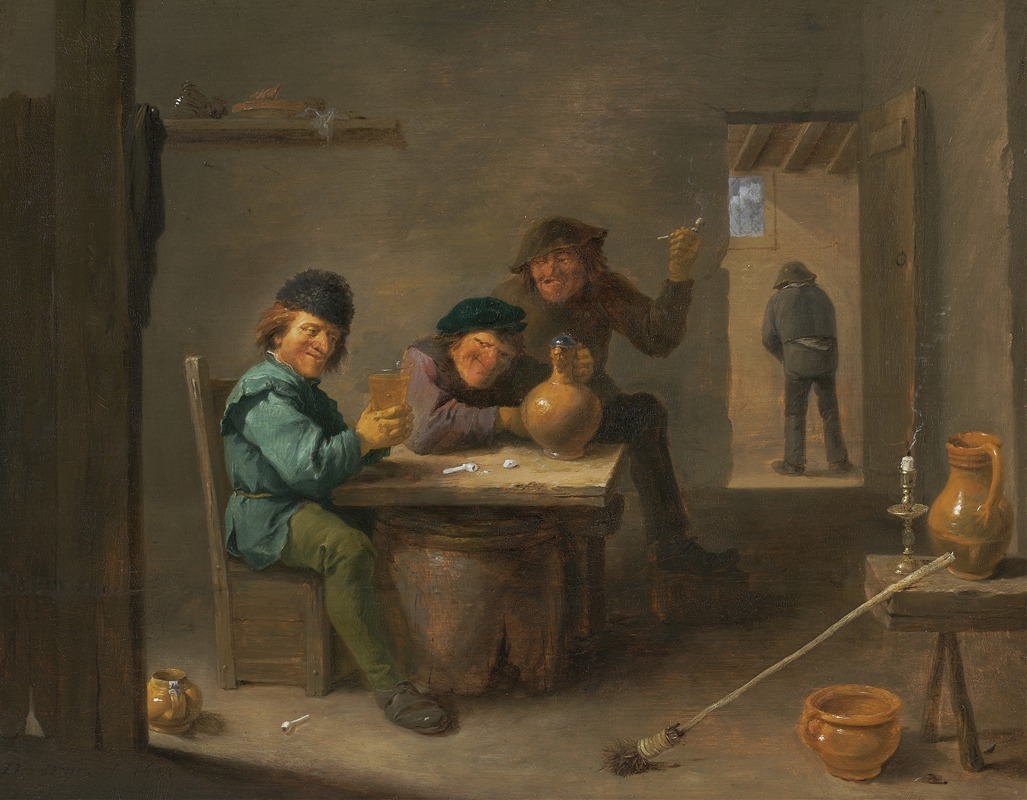
Peasants in a Tavern
A hand-painted replica of David Teniers The Younger’s masterpiece Peasants in a Tavern, meticulously crafted by professional artists to capture the true essence of the original. Each piece is created with museum-quality canvas and rare mineral pigments, carefully painted by experienced artists with delicate brushstrokes and rich, layered colors to perfectly recreate the texture of the original artwork. Unlike machine-printed reproductions, this hand-painted version brings the painting to life, infused with the artist’s emotions and skill in every stroke. Whether for personal collection or home decoration, it instantly elevates the artistic atmosphere of any space.
David Teniers the Younger was a prominent Flemish artist known for his genre paintings, particularly those depicting scenes of peasant life. One of his notable works is "Peasants in a Tavern," which exemplifies his skill in capturing the everyday activities and social interactions of common people during the 17th century.
"Peasants in a Tavern" is a genre painting, a style that Teniers mastered and popularized. This painting typically portrays a lively scene inside a rustic tavern, a common setting in Teniers' work. The composition often includes a group of peasants engaged in various activities such as drinking, playing cards or dice, and conversing. Teniers' attention to detail and ability to convey the textures of different materials, such as wood, fabric, and metal, are evident in the depiction of the tavern's interior and the clothing of its occupants.
Teniers was known for his ability to infuse his paintings with a sense of realism and humor. In "Peasants in a Tavern," he often depicted the characters with expressive faces and gestures, capturing the jovial and sometimes rowdy atmosphere of the scene. The artist's use of light and shadow adds depth to the painting, highlighting the figures and creating a sense of space within the tavern.
The painting reflects the social and cultural context of 17th-century Flanders, where taverns were central to community life. These establishments served as gathering places for people of various social classes, providing a setting for leisure and social interaction. Teniers' work offers a glimpse into the daily lives of peasants, showcasing their customs, attire, and social dynamics.
David Teniers the Younger was influenced by his father, David Teniers the Elder, and other artists of the time, such as Adriaen Brouwer and Pieter Bruegel the Elder. His work is characterized by a keen observation of human behavior and a talent for storytelling through imagery. Teniers' paintings were highly sought after during his lifetime, and he enjoyed the patronage of notable figures, including Archduke Leopold Wilhelm of Austria.
"Peasants in a Tavern" is part of a larger body of work by Teniers that explores similar themes. His paintings are appreciated for their artistic merit and their ability to convey the spirit of the era. Today, Teniers' works can be found in major museums and private collections around the world, where they continue to be studied and admired for their historical and cultural significance.
In summary, "Peasants in a Tavern" by David Teniers the Younger is a quintessential example of Flemish genre painting, capturing the essence of 17th-century peasant life with humor, detail, and realism. Through his work, Teniers provides valuable insights into the social fabric of his time, making his paintings enduring pieces of art history.





